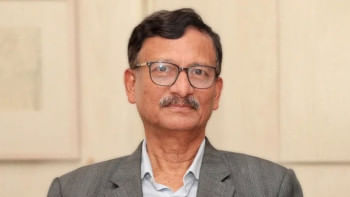Bangabandhu’s development vision and the unfinished work

The Father of the Nation, Bangabandhu Sheikh Mujibur Rahman, was a visionary leader whose birth centenary is being celebrated this year. It will be a way of showing respect to his vision and a journey he led towards building a new nation whose progress he was not able to see with his own eyes. As we are about to celebrate one hundred years of his birth on March 17, 2020, we need to explore how much and in what ways the country has progressed and where we are yet to achieve the desired goals.
First of all, we can make some comparison of quantitative progress made since the time of independence of the country in 1971 till now. In terms of the total size of the economy, GDP was only USD 8.7 billion in 1971. GDP in 2019 stood at USD 350 billion. The total size of the country's development budget was only Tk 501 crore in 1972-73 which rose to Tk 523,190 crore in 2019-20. GDP per capita rose from less than USD 100 in 1972 to USD 1,800 in 2019. The country already achieved food and fish self-sufficiency. Total food-grain production increased from 9.7 million metric tons in 1971 to 35 million metric tons in 2019. The GDP growth rate in 2019 reached 8 percent. In 1971, more than 80 percent of the population lived below the poverty line and had an average life expectancy of 48 years. The poverty rate has now declined to about 20 percent and life expectancy has risen to 73 years.
Bangbandhu's development dream was to build a prosperous Bangladesh, free from poverty, hunger, corruption and exploitation. His dream was to establish the rights of the people and build a society based on integrity, equality and justice. In 1972, in a constituent assembly speech he said that, "We have to put a smile on poor people's face. The people of Bangladesh have to survive and so require a minimum amount of food." He prioritised both agricultural development and industrialisation; agriculture sector will provide food for the people and industry will generate income—both of which were required to reduce poverty.
Bangbandhu's dream of successfully establishing the country as a role model of sustainable and inclusive development was embodied in the First Five Year Plan (1973-1978) of the country. The plan's objectives were: to reduce poverty, to expand the output of essential consumption items, to arrest inflation, to increase GDP growth rate, to attain self-sufficiency in food-grain production and to reduce the population growth rate. On the first anniversary of independence, in 1972, Bangabandhu said, "We will turn this war-ravaged country into a golden one. In the Bengal of the future, mothers will smile and children will play. It will be a society free of exploitation. Start the movement in the fields and farms and the factories. We can rebuild the country through hard work. Let us work together so that the Golden Bengal shines again."
Bangladesh made significant progress in agriculture, fisheries, poultry and cattle sector and quite good progress in manufacturing, garments and medium and small enterprises. However, there are yet many challenges in our social sectors such as in health, nutrition, and education. The government adopted the National Social Security Strategy (NSSS) in 2015 to address poverty. The government also increased budgetary allocation towards social safety net programmes in recent years. In 2018-19, a total amount of Tk 64,176 crore was allocated from government budget for social safety net programmes. The allocation was 13.81 percent of the annual budget and 2.53 percent of GDP.
However, in our efforts to reduce poverty, we need to remember that it is a multidimensional issue. Only cash or food assistance will not address poverty fast enough. Money and food combined with delivery of quality health, nutrition and education support, clean water, vocational training and behavioural changes will help reduce poverty in a sustainable manner. Therefore, all public services should proactively and effectively target poor families.
Public services delivered now is not well coordinated. For example, child survival interventions which require health, nutrition, water and sanitation, birth registration and early childhood development are not provided according to the required quantity and quality, affecting child mortality and morbidity rates in the poorest of families. Although about one third of under-five children suffer from malnutrition in the country, most of the burden falls on the poorer families. By increasing synergy between service sectors, the impact on child nutrition and child survival in the poor families can be improved since it will address the interrelated underlying causes of malnutrition and child mortality which are disease, lack of antenatal and postnatal care, poor immunisation of children and their mothers, limited availability of clean water and poor hygienic practices.
With many successes to mention, we still have a long way to go in our struggle to eliminate poverty and vulnerability, and improve the quality of life of the majority of the people. We are currently focused on building many mega projects that were initiated by the present government—but which should not take our attention away from the urgent need for investing more in the social sector, for promoting skills and creating jobs for the educated youths, diversifying exports, tackling corruption and strengthening the banking sector. With the adoption of the right policy decisions, we will achieve our mission of transforming Bangladesh into an upper-middle income economy by 2031 and a developed one by 2041.
Dr Nawshad Ahmed is an economist and urban planner. He worked previously as a UN official in Bangladesh and abroad.

 For all latest news, follow The Daily Star's Google News channel.
For all latest news, follow The Daily Star's Google News channel. 



Comments